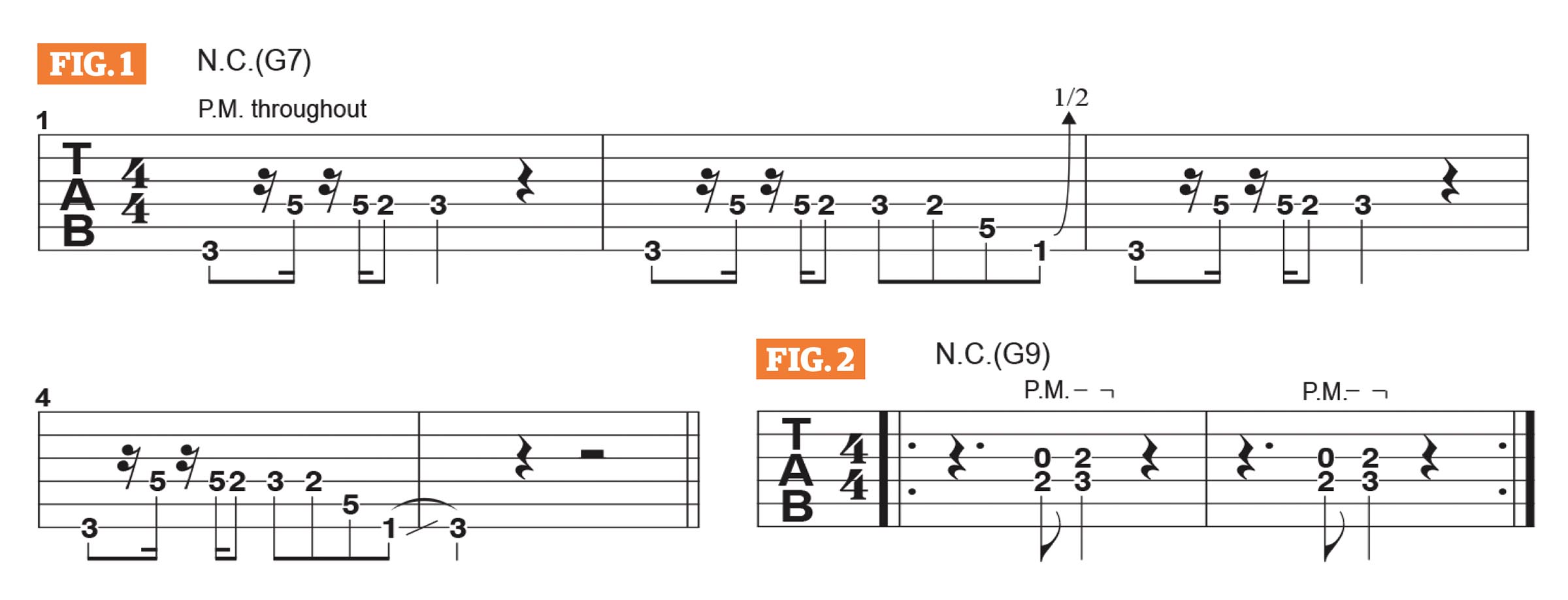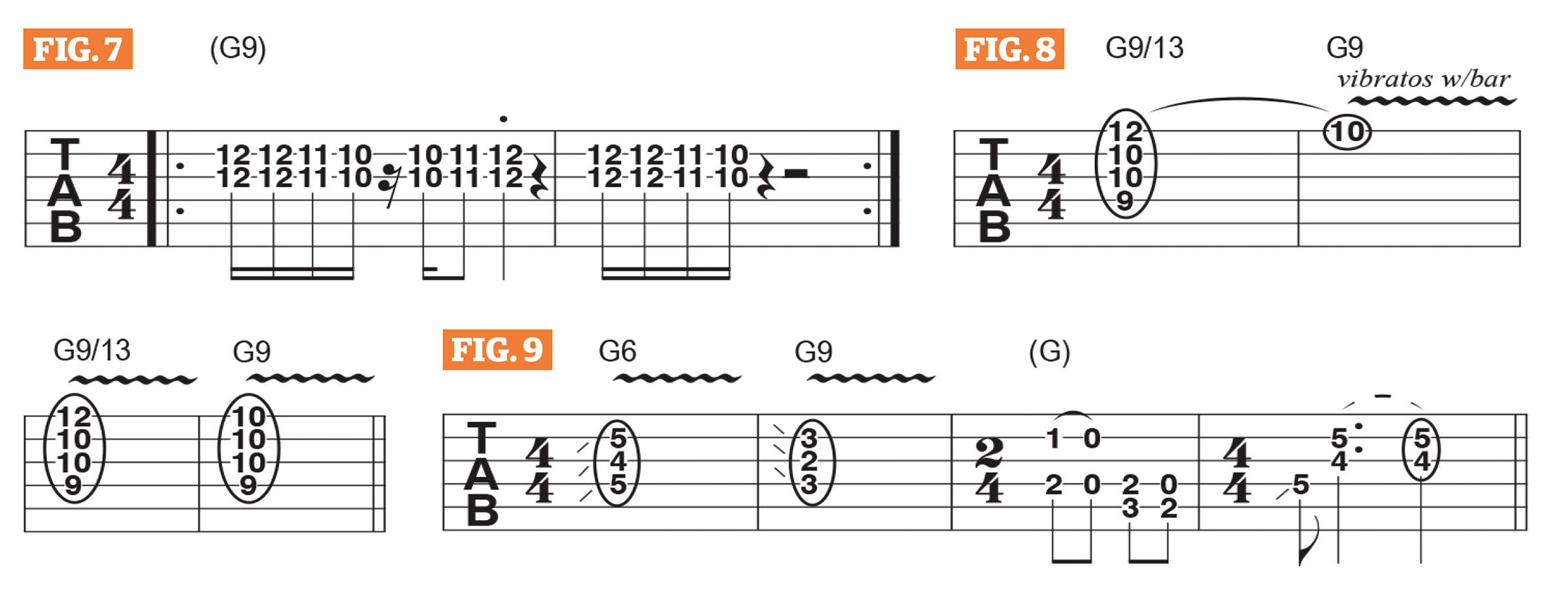“My objective is to find a purposeful role for each guitar part”: How to layer guitar parts like a pro (with a little help from Cory Wong)
When I am composing and arranging music, I like to think as an orchestrator. As the guitarist, I try to represent just about everything that’s in the arrangement – the drum syncopations, horn parts, keyboards, etc. – in multiple guitar parts. I might start with a bass-like theme, along the lines of Figure 1.
Playing in the key of G, I begin on a low G and then playing a G one octave higher on the last 16th note of beat 1. After a 16th rest on beat 2, the high G is played again, followed by E to F in eighth notes. I’ve now established a “16th-note grid” that serves to represent the rhythmic syncopation of the music.
My next inclination would be to add a complementary part above that, one that’s intentionally simple and sparse. As shown in Figure 2, I play two-note shapes, 3rds apart, on the D and G strings, that fall on the upbeat of beat 2 into beat 3. Doing this serves to strengthen these accents in each bar, simple as it may be.
A great way to add to these two parts is to virtually double Figure 2 an octave higher. As shown in Figure 3, I begin each bar with a quick accent on G9, followed by the same two-note shapes 3rds apart, played one octave above the previous part.
For a fourth guitar part, I could add a 16th-note horn-like stab, voiced as a unison bend on the top two strings, on the last 16th note of beat 1, as shown in Figure 4.
Right now, everything I’ve played fits into the same type of 16th-note rhythm, so, all together, it feels like one big groove.
My next inclination is to move away from the 16th-note grid and add something that hints at the other parts but supplies a little more momentum via a straight eighth-note feel. This is shown in Figure 5 and is built from other two-note shapes that are 3rds and 4ths apart.
All the latest guitar news, interviews, lessons, reviews, deals and more, direct to your inbox!
Notice that for many of these parts, I play them as four-bar phrases, as opposed to a repeating one- or two-bar phrase. This way, the parts are less repetitive and also come to a “conclusion” in bar 4 before the phrase repeats.
A great part to add now is something along the lines of a shaker or hi-hat accenting straight 16th notes throughout. Figure 6 is played in this way, devised of muted-string accents along with the interval of 2nds, sounded with F and G notes.
Just as a drum kit has a kick, snare and hi-hats, this high part functions like the hi-hats, while the previous figures are more representative of the kick and snare.
At this point, with all these guitars outlining the rhythmic foundation, it’s good to add a more melodic part, like Figure 7. Here, I play 3rds on the G and B strings, descending and then ascending one fret at a time. Also, I’m getting a pizzicato violin-like sound by using palm-muted downstrokes.
What else is missing? Thus far, everything is quite rhythmic, so, with this new layer, I have the ability to really change the vibe via some ringing chords, treated with a little bar vibrato, as shown in Figure 8.
Figure 9 offers another part played with the same approach, similar in vibe to Miles Davis’ Freddie Freeloader.
My objective with all this is to find a purposeful role for each guitar part, and when they’re added together, it feels like one unified rhythmic and harmonic entity.
Funk, rock and jazz pro Cory Wong has made a massive dent in the guitar scene since emerging in 2010. Along the way, he's released a slew of quality albums, either solo or with the Fearless Flyers, the latest of which are Starship Syncopation and The Fearless Flyers IV, both from 2024.
You must confirm your public display name before commenting
Please logout and then login again, you will then be prompted to enter your display name.






